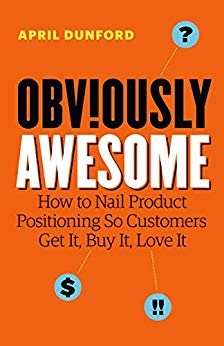The Tell Tale Sign That Your Product Has a Positioning Problem

Below is a summarized excerpt from the book Obviously Awesome by April Dunford, which every startup founder and product manager should read:
---------
In short, It says that biggest tell-tale sign that you have a positioning problem is: your current customers love your product but new prospects can’t seem to figure out why they would need it. The story below helps make the point clear.
I once received a call from a startup with a product that customers loved but prospects couldn’t figure out. The founders were ex-lawyers who had set out to build “better email for lawyers,” and they walked me through a demo.
I asked them to show me the calendar and they explained it didn’t have one. I was surprised, since calendaring is assumed functionality for any email solution. Interestingly, their happy customers didn’t mind. They chose the product for its ability to do secure, context-aware file sharing.
Again, I was surprised. File sharing is a problem normally solved with team collaboration software, not email. The product was positioned as “email” but didn’t have features we assume any email solution would have. Also, the key unique feature of the product was not expected or even particularly valued in their market (“email”).
Repositioning the product as “team collaboration software” made it easier for customers to intuitively understand what was valuable about it, and avoided customers looking for functionality it didn’t have. Even though the product was developed with a certain market in mind, what the company built was a better fit in a completely different market category.
----------
Dunford defines positioning as: The act of deliberately defining how you are the best at something that a defined market cares about. The other signs that may indicate you have a positioning problem are:
2. Long sales cycles and low close rates:
3. High customer churn: Customers misunderstood your value proposition and cancel at a high rate. They also complain a lot and ask for custom features. Before long you are no longer a product company but a custom dev shop! And now you have to explain to your venture capital backers why you used their money to build a consulting company rather than a rocket-ship product company!
4. You are under price pressure: The few customers you can get want to nickel and dime you all day long. When you get positioning right, you have customers remark how they were ready to pay much more. One of our prospective clients had this happen recently. She quoted a price of $9,000 and the customer said "$9,000 a year is not bad. Well get our finance guy to sort you out." She had to correct them that it was one time $9,000 fee! She has an amazing product and I would link to it but I don't want to create competition for her!.
The other good book on the subject is the classic Positioning by Al Reis and Jack Trout.



